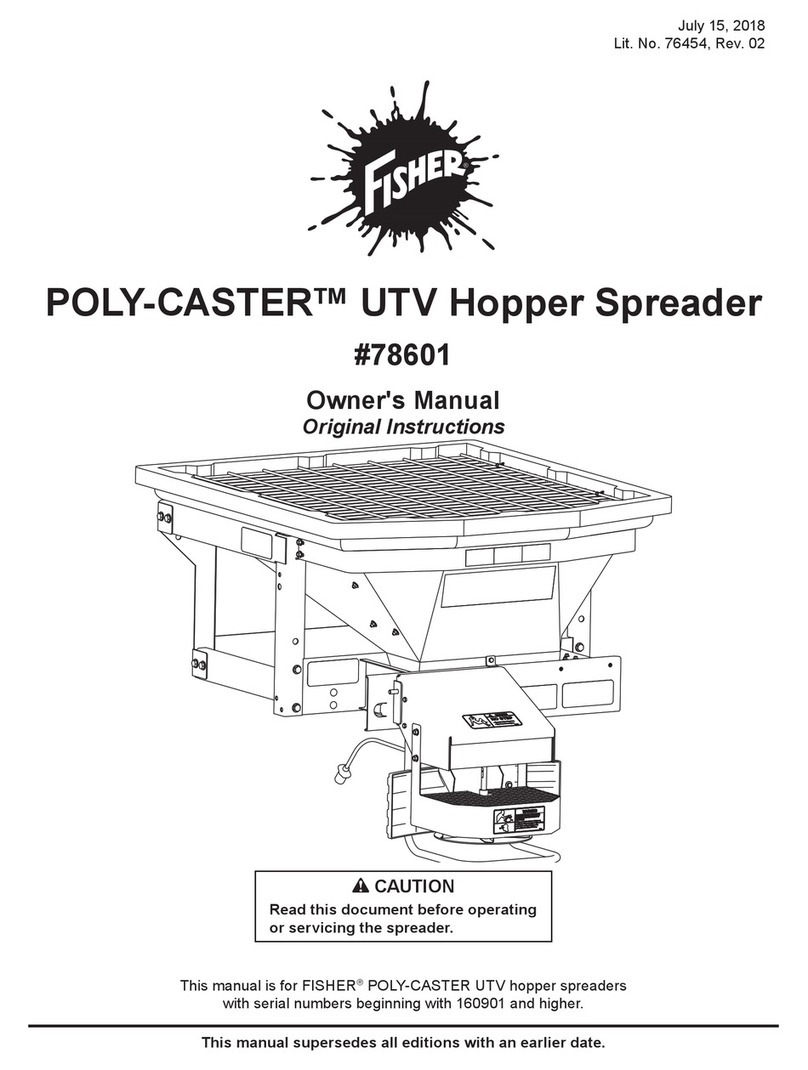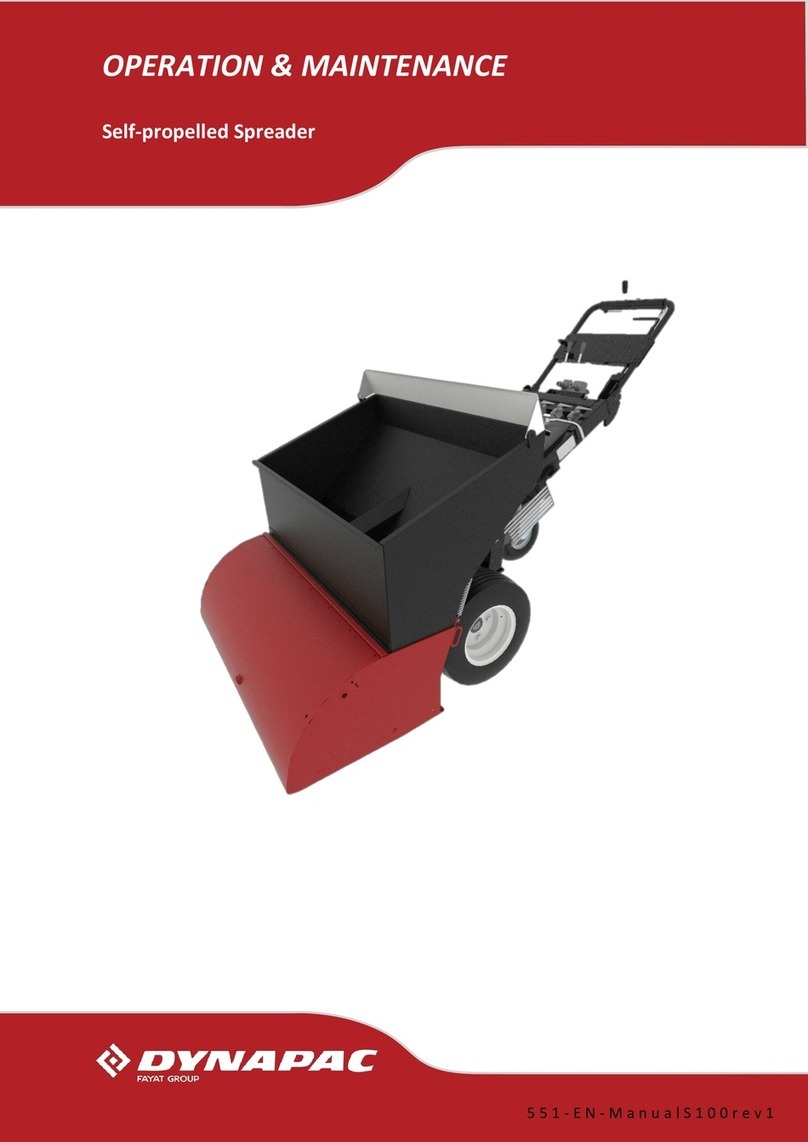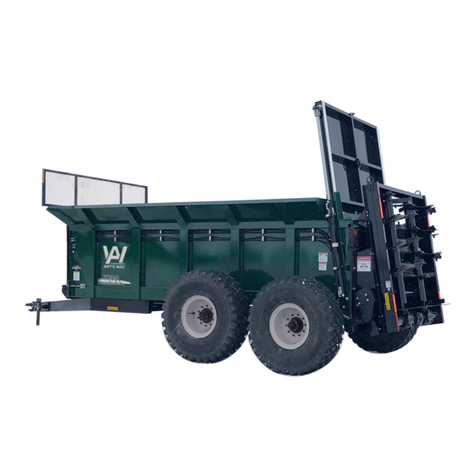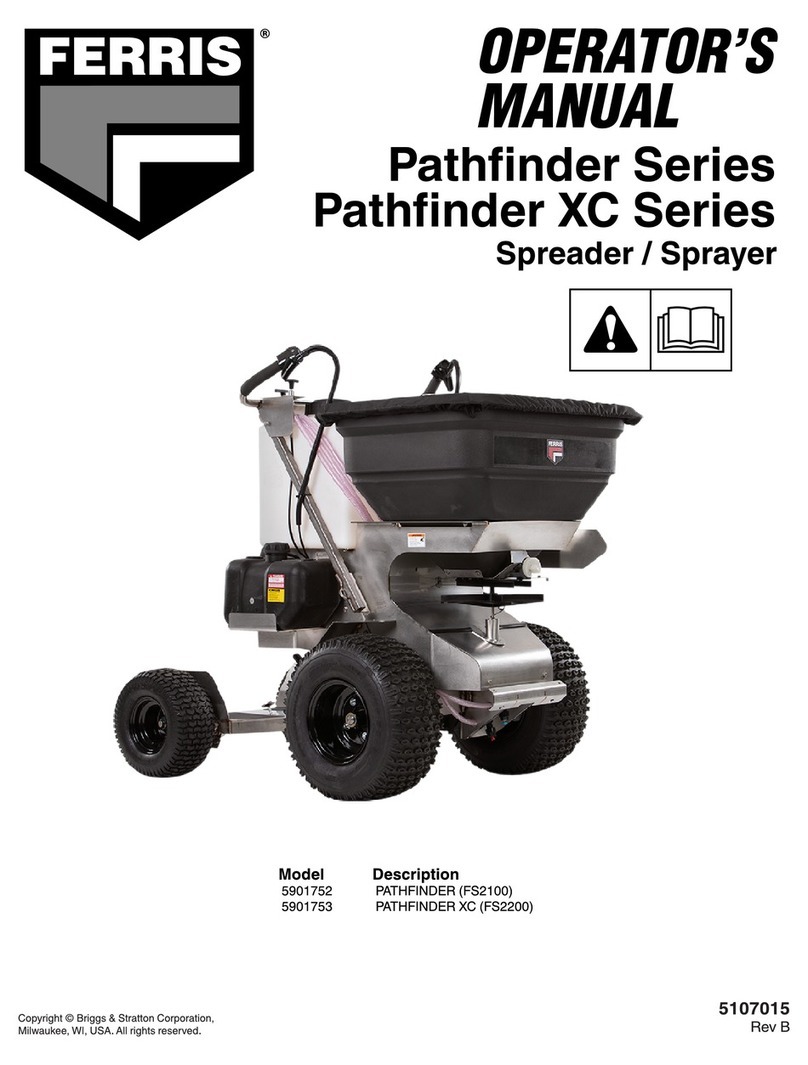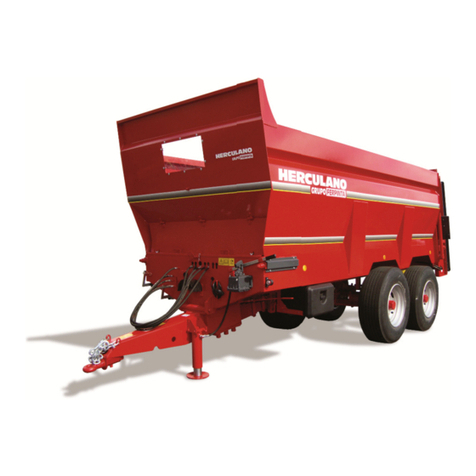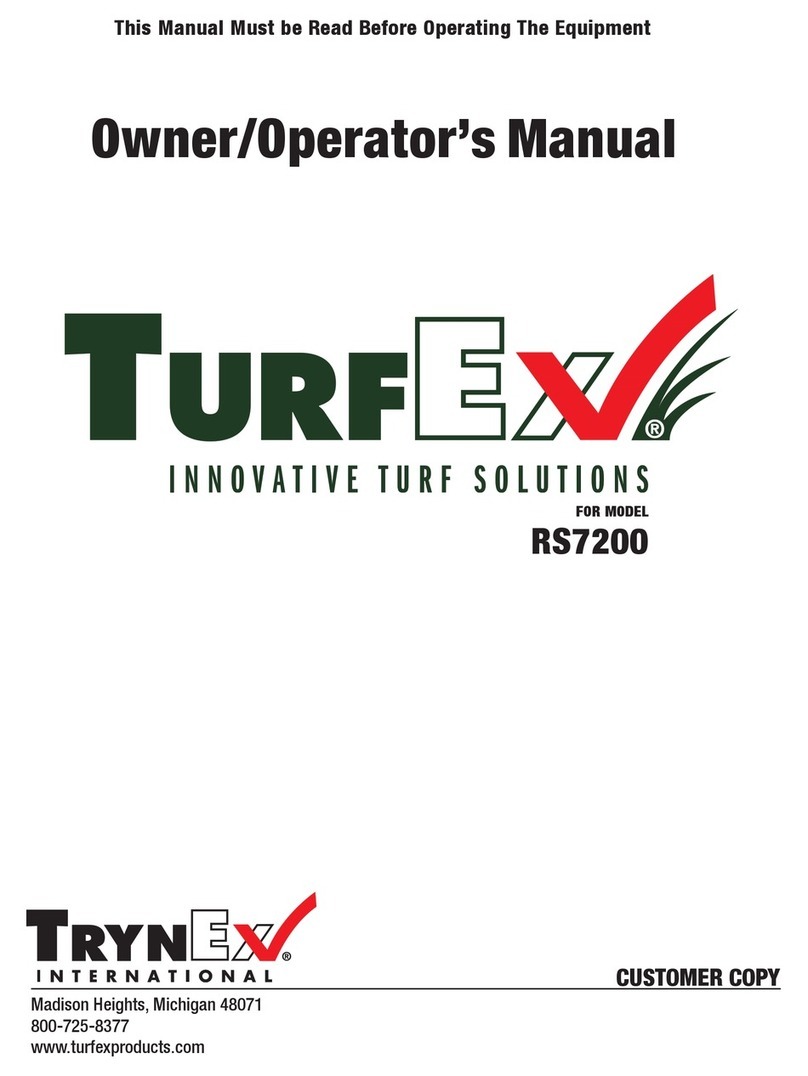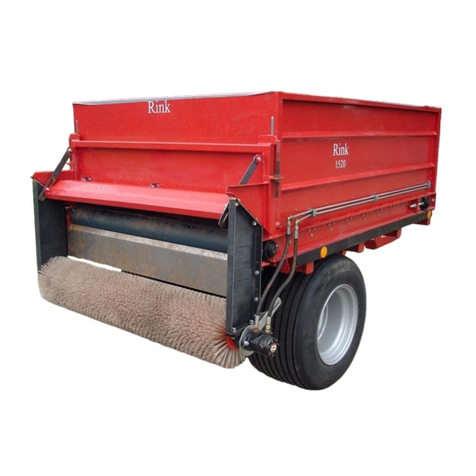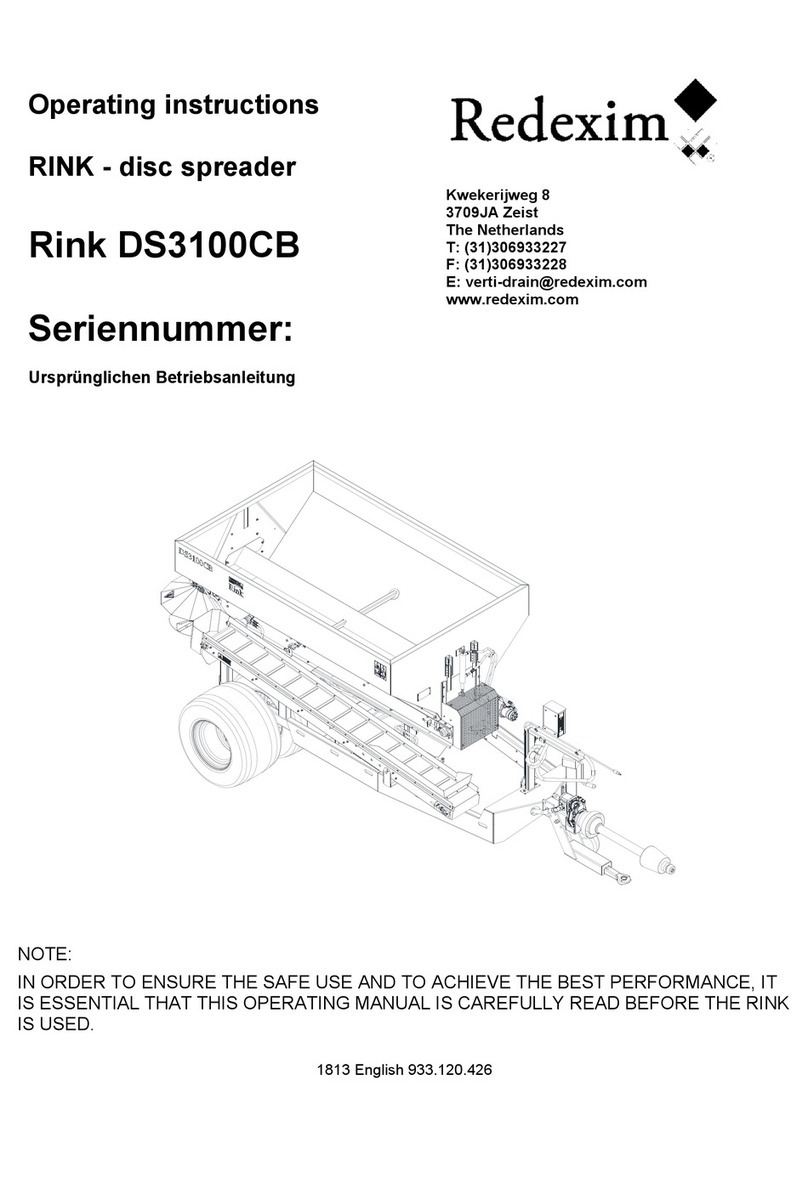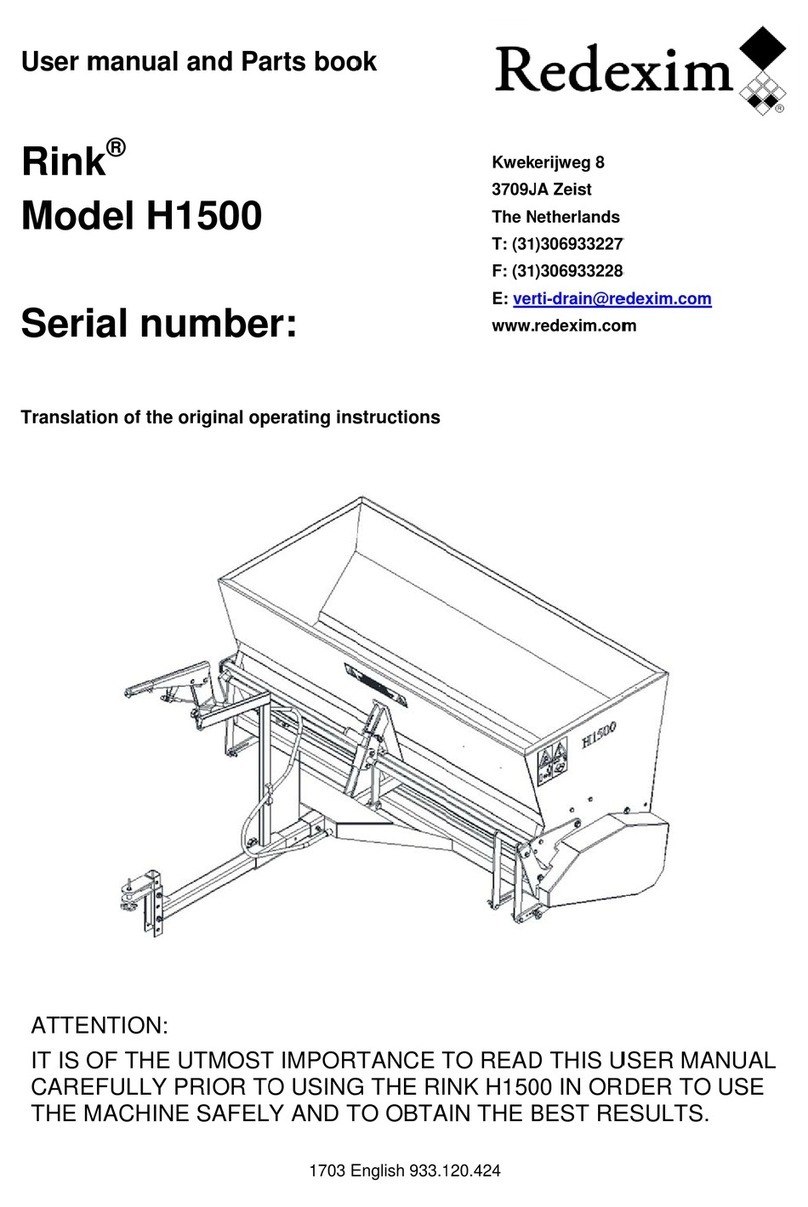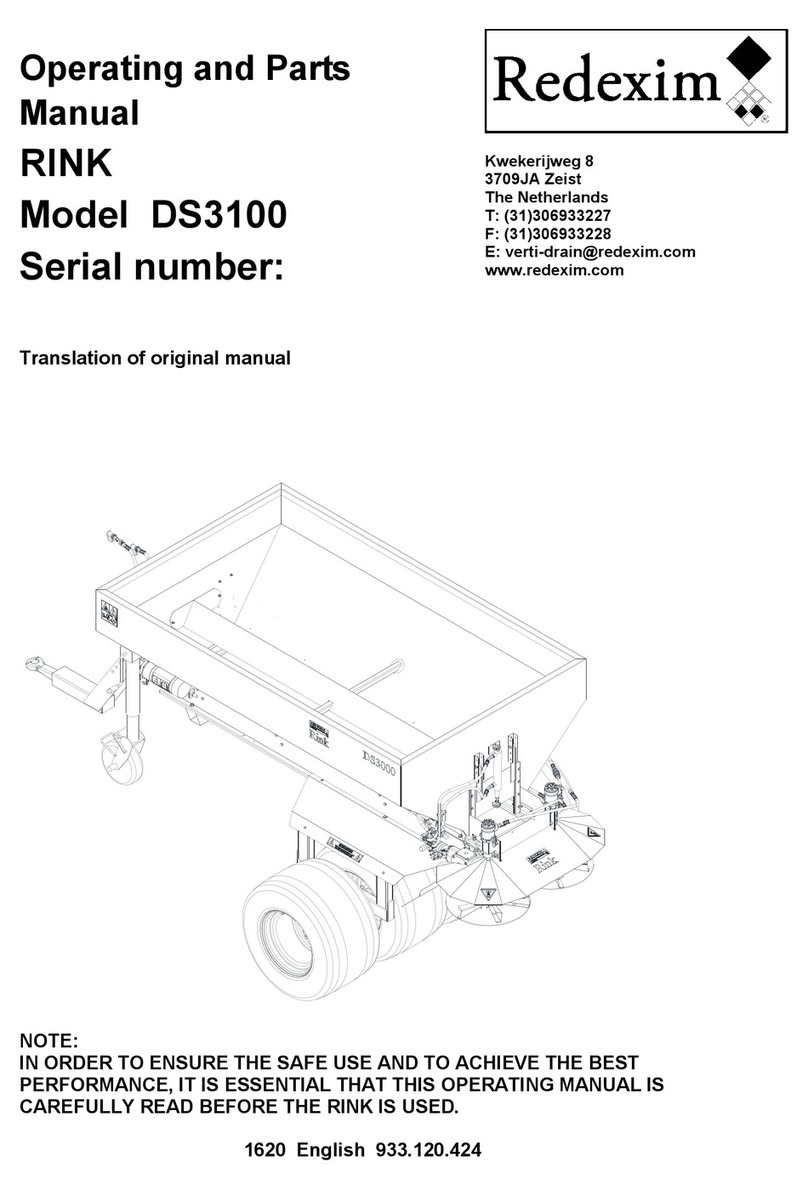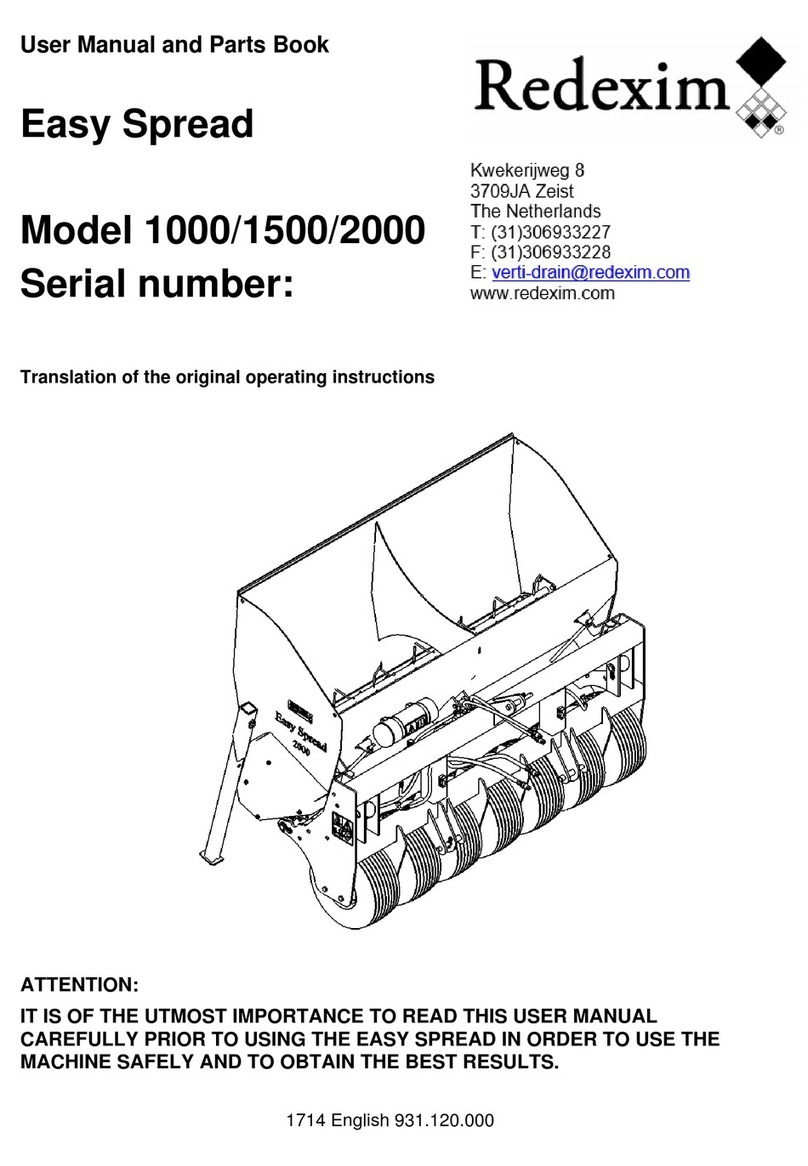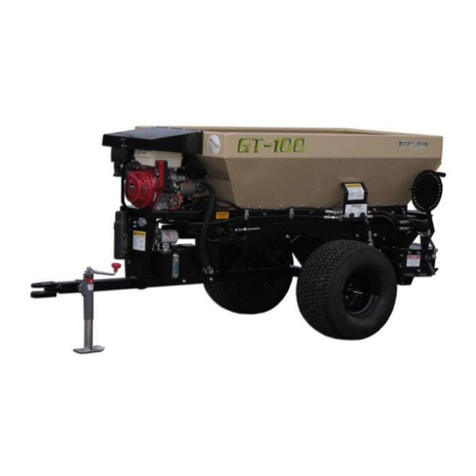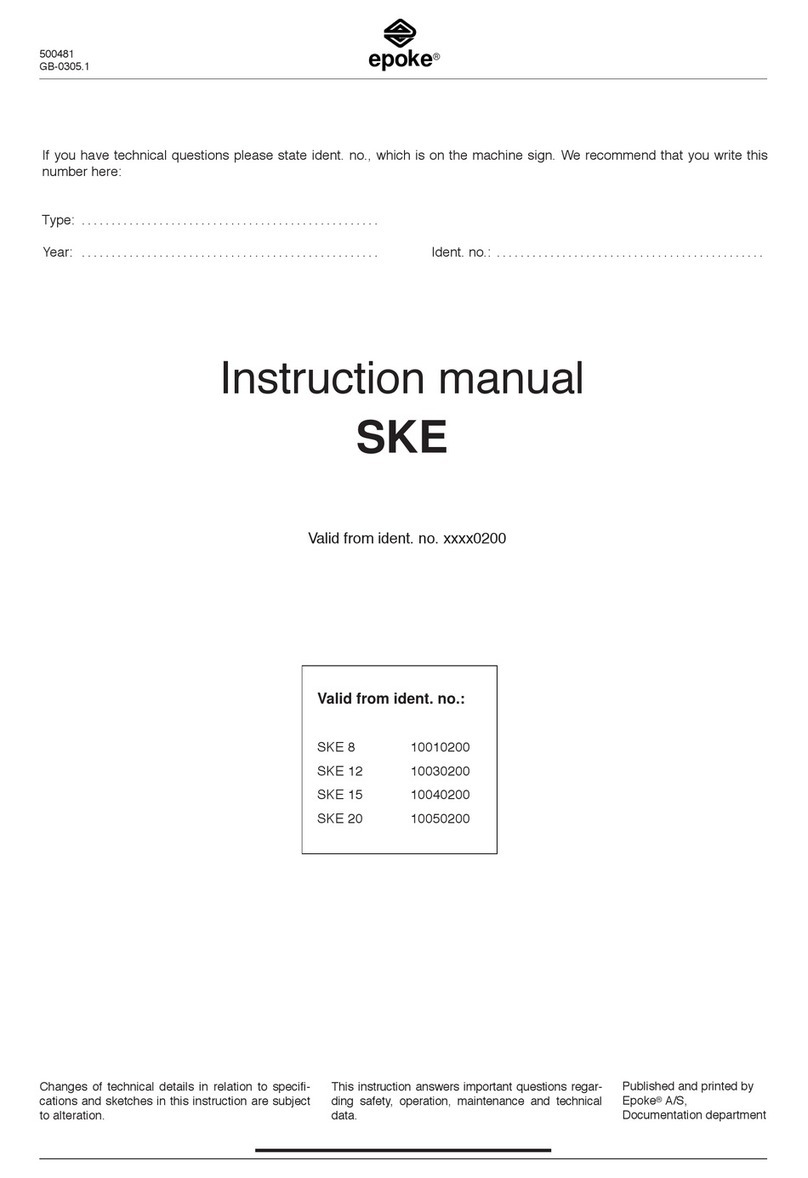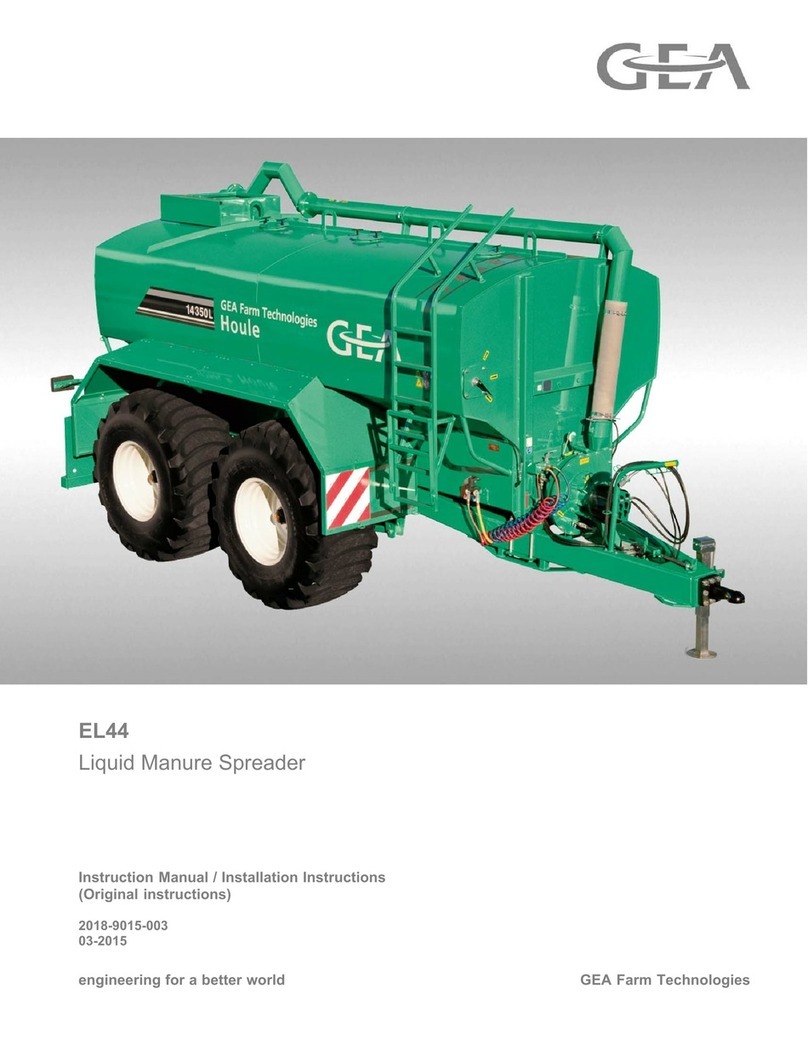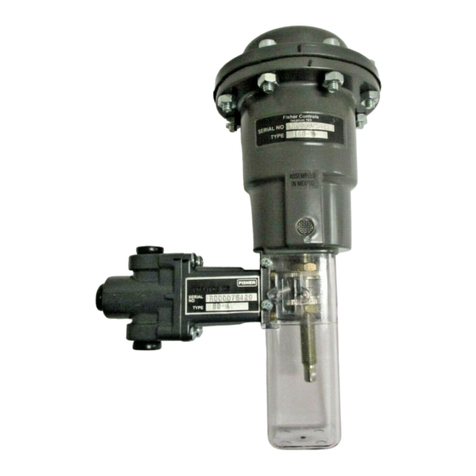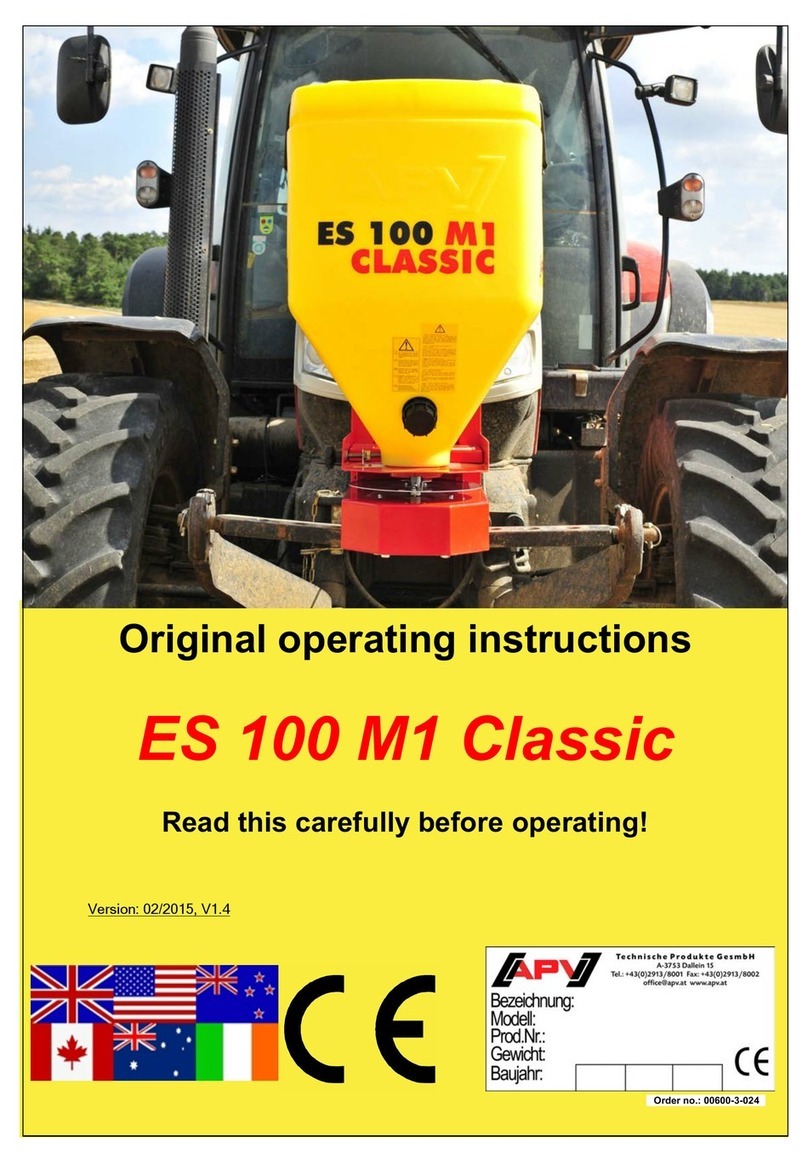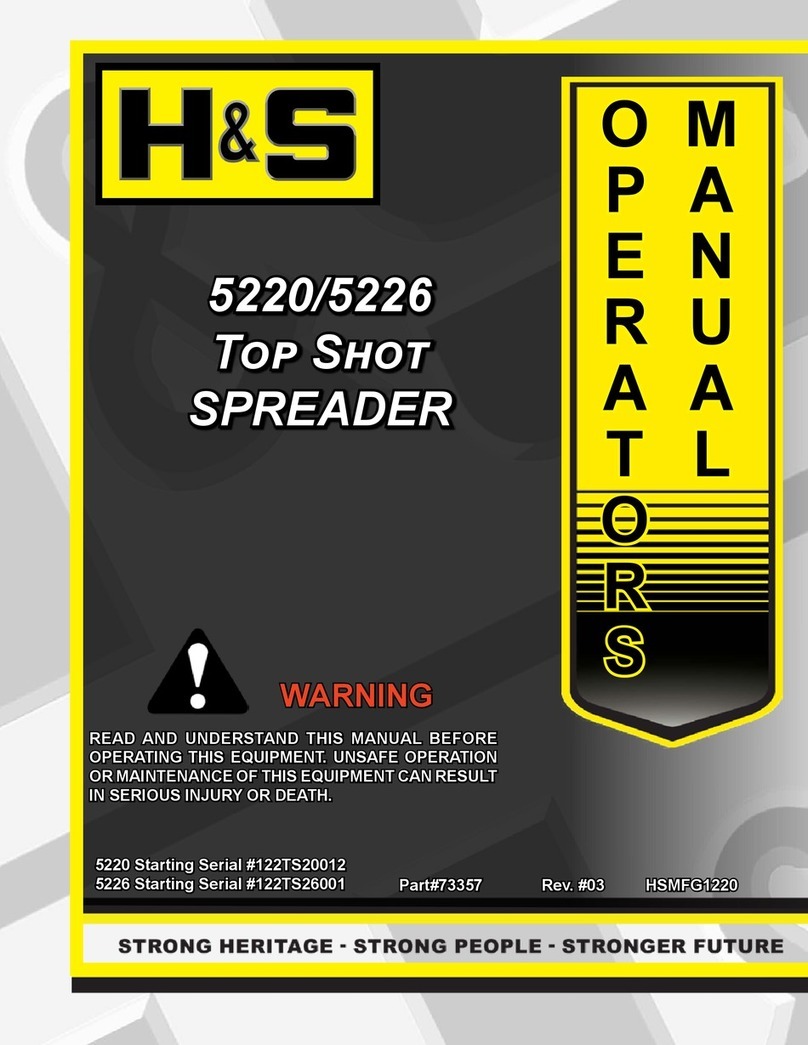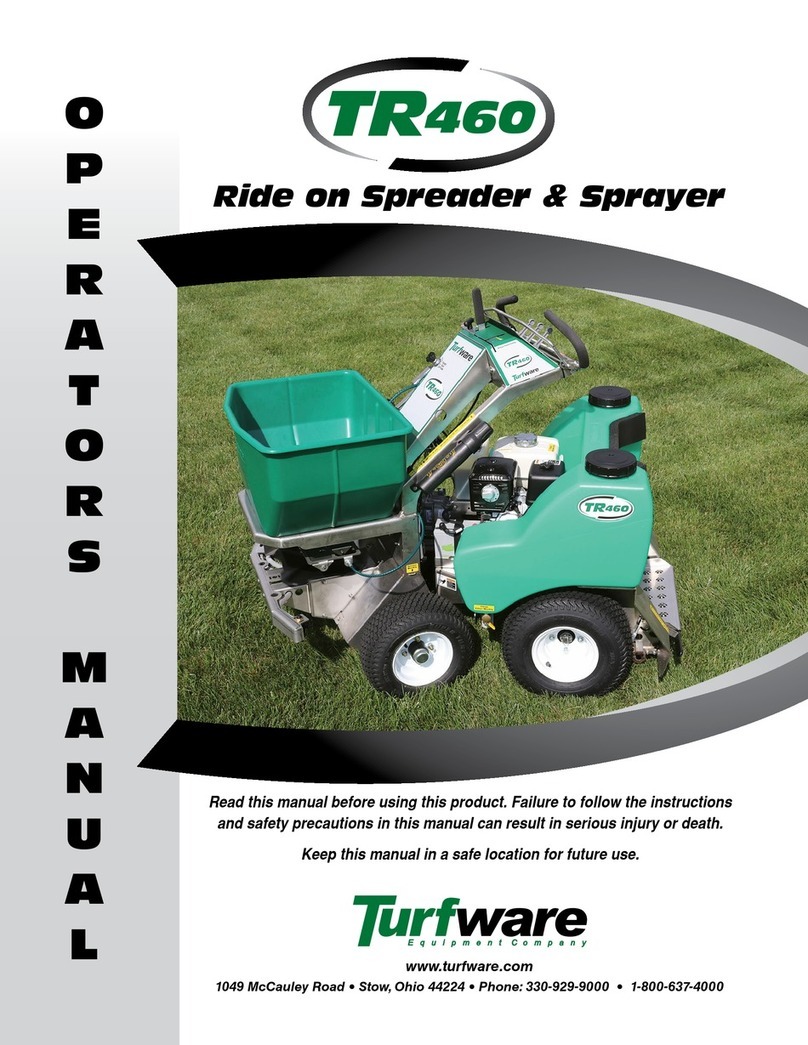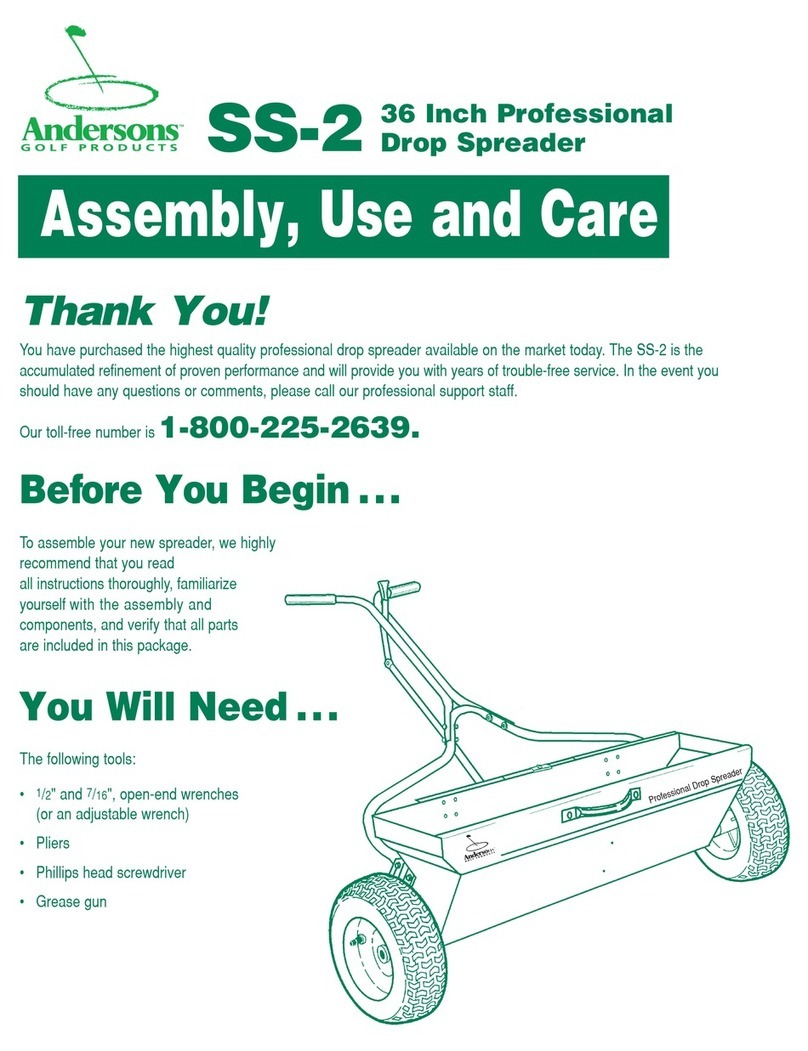
3
! SAFETY REGULATIONS !
(1) The Topdresser 1005/ 1010 is built solely for spreading small-grained, loose
material such as sand, small granular material or similar products.
Any other usage is not in accordance with the indicated use. The manufacturer
does not answer for any damage resulting from incorrect usage. The user alone
has to incur the risk.
Usage in accordance with the intended use also includes compliance with the
manufacturer’s conditions of operation, maintenance and repair.
(2) The spreader is built according to prior art and operationally reliable; however,
the spreader could put life and limb of the operator or of third persons at risk if it
is not used, maintained and repaired by persons who are familiar with it and have
been informed of the dangers.
(3) Any person who, in the plant of the user, is responsible for the operation,
maintenance and repair of the spreader, must have read and understood the
operating instructions and, in particular, this chapter, Safety Regulations.
Detach the spreader from the towing vehicle during maintenance and service work.
Only use original spare parts from the manufacturer for repairs.
Alongside the references in these operating instructions, the general regulations
for safety and for prevention of accidents must be observed.
When using public roads, the corresponding provisions (e.g. StVZO) will be
in force.
Accompanying persons are not allowed !
(4) A spreader may only be towed along public roads once it holds the necessary
registration. Complete road-worthiness certificate, licensing permit and the
additional safety facilities necessary for this (Lighting set, wheel chocks)#are
obtainable on request of the customer.
(5) The operator is obliged to check the spreader for any external damage or
failure before putting it into operation. Any changes (including operating
performance) which might affect safety must immediately be remedied. Changes
to and rebuilding of the spreader (other than changes allowed by the
manufacturer) are, for reasons of safety, not allowed.
